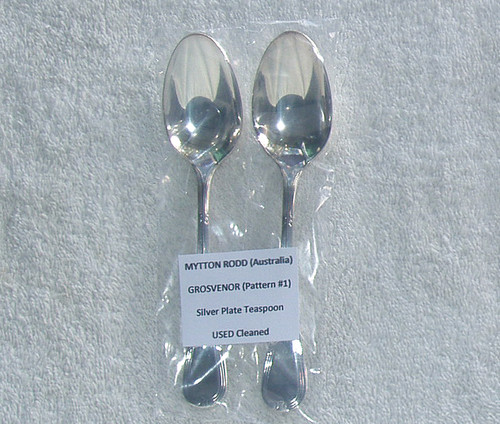Oneida is an American company which began as the Oneida Community (a commune) in 1880.
The company became one of the major American cutlery designers and manufacturers in the country. Unsettled financial times beginning in the 1990's mean't the company underwent a number of changes and in 2012 the company merged with Anchor Hocking.
This is a salad fork!
We always used it as such, Oneida's catalogue clearly states this is a salad fork and in fact Oneida does not even list a product called "fish fork", all reputable restaurateur's will know this is a salad fork - here is another link to illustrate my point.
I say this because I constantly see online references to this type of fork as a "fish fork" - to be frank, this salad fork has nothing in common with a fish fork and you shouldn't believe what some "ning-nong" states online in personal ads!
THIS FORK IS OFFERED AS A REPLACEMENT OR ADDITION TO AN EXISTING SET
Oneida Salad Fork
Original product - this is NOT a 3rd party reproduction
Silver Plated
Pattern: Silver Rose
The pattern Silver Rose was originally released in 1956 and created by Frank Perry. This does not mean this fork was produced in 1956 but we feel the design is more from the 1970's using the Silver Rose pattern.
The design of the fork is very Arktos in style, i.e the handle is straight forward and un-decorated with a rectangular finish at the end.
The Silver Rose pattern is only right near the prongs, on both sides of the fork.
To correctly ascertain that this fork is an exact match for those you may already have, please look closely at the photographs and in particular the closeup of the Silver Rose design.
The fork measures 7" long (178mm)
Stamped into the rear of the fork is:
Oneida SILVERPLATE
COSMETIC CONDITION:
Clean and with a high lustre
NO oxide marks or other markings
NO signs of use - to be truthful we didn't use these very much!
Silverware always has the oxidisation/tarnishing issue over time, so to reduce this to a minimum I have now placed this salad fork within sealed plastic to reduce the amount of contact with "air" reducing the period of time between cleans.















